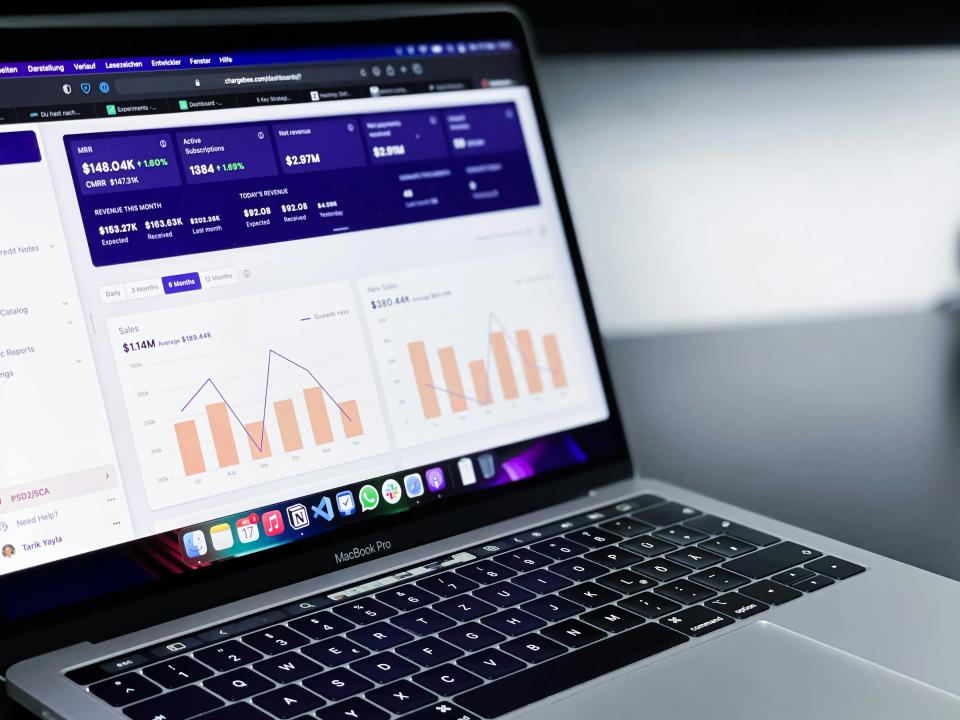Imagine your brand, not just known in your city or country, but recognized across continents. Picture your products or services solving problems for people in Tokyo, Berlin, São Paulo, or Sydney. This isn't a pipe dream; it's the tantalizing promise of global brand expansion, a chance for exponential growth and market dominance.
But let's be real. Stepping onto the world stage is like navigating a labyrinth blindfolded. You're facing a whirlwind of cultural nuances, baffling language barriers, and markets already bursting at the seams with competitors. How do you cut through the noise and plant your flag firmly in new territories?
Fear not, because you have a secret weapon: Google Ads. This isn't just another advertising platform; it's your scalable, precision-guided missile for global brand expansion. In this guide, we'll unpack how to strategically plan your global assault, master international targeting, craft creatives that truly connect, and measure what matters. And yes, with a global team ourselves, we at CaptivateClick live and breathe these international complexities daily, turning challenges into triumphs for brands like yours.
Why Google Ads is Your Passport to Global Markets
Think Google Ads is just for local businesses? Think again. This powerhouse is your golden ticket to international acclaim and, more importantly, international revenue. Why? Because Google isn't just big; it's colossal.
Its network, encompassing Search, Display, and YouTube, offers an unparalleled reach, touching nearly every corner of the internet-connected world. We're talking billions of searches daily. According to Statista, Google holds over 80% of the global search engine market share, making it the undisputed king. This means your future customers are already there, actively searching for solutions you provide.
But reach without precision is like shouting into the wind. Google Ads allows you to pinpoint specific countries, regions, languages, and even the most granular demographics. Want to target 30-something female entrepreneurs in urban France who speak English and are interested in sustainable fashion? Done. This laser focus ensures your message hits home, not just a house in the general vicinity.
The beauty of it? Every click, every conversion, every penny spent is trackable. This measurable ROI is crucial for informed decision-making and smart budget allocation, allowing you to see exactly what's working and what's not. You can start small, test the waters in one new market, learn, adapt, and then scale your success story across the globe. Whether you're aiming to build massive brand awareness or drive immediate, direct-response sales – the kind of results we champion with our SEM and Lead Generation services – Google Ads delivers.
Phase 1: Strategic Planning for Global Google Ads Success
Jumping into global markets without a plan is like setting sail without a compass – you'll drift, waste resources, and likely sink. Success demands meticulous strategic planning. This is where the groundwork for your international triumph is laid.
Market Research & Selection
First, you need to identify which international markets are truly viable. Don't just throw a dart at a map. You must understand the local demand for your offering, scrutinize the competitive landscape, and consider crucial economic factors. Is there a genuine need? Can you compete? Is the market economically stable enough to support your growth?
Tools like Google's Market Finder can be invaluable here, helping you evaluate advertising costs, local demand, and even logistical factors like payment methods for new markets. As Dexfinity points out, these tools help you assess market potential and avoid oversaturated regions, guiding you towards areas with high ROI potential. Understanding local search behavior and keyword variations is also paramount; what your home market searches for might be phrased entirely differently elsewhere.
This initial research is your foundation. Get it right, and you're building on solid rock. Get it wrong, and you're building on sand.
Localization vs. Translation: More Than Just Words
Here’s a landmine many businesses step on: thinking translation is enough. It’s not. You need localization. What’s the difference? Translation is swapping words. Localization is adapting your entire message – content, visuals, user interface – to resonate culturally.
Think about it. Idioms, humor, color symbolism, social norms – these vary wildly across borders. A phrase that’s catchy in English might be confusing or even offensive in Japanese. Naarg Media highlights this critical distinction, explaining that localization adjusts for cultural norms (like KFC adapting its menu in China), while transcreation rewrites slogans for emotional impact, ensuring your brand's intent is preserved while resonating locally.
This is where having a diverse team with genuine local market understanding, like ours at CaptivateClick, becomes a superpower. We don't just translate; we ensure your message speaks the cultural language, building trust and connection from the first click. Ignoring this can lead to embarrassing blunders and wasted ad spend.
Setting Clear Global Campaign Objectives & KPIs
What do you actually want to achieve in each new market? "More sales" is a wish, not an objective. Are you aiming for brand awareness, lead generation, direct sales, or deep market penetration? Each goal requires a different approach and different Key Performance Indicators (KPIs).
For a brand awareness campaign in a new market, you might focus on impressions, reach, and brand search lift. For lead generation, it's cost per lead and lead quality. For e-commerce sales, it's conversion rate, average order value, and Return on Ad Spend (ROAS).
Defining these success metrics before you launch is non-negotiable. It’s how you’ll know if your campaigns are hitting the mark or if you need to pivot. This clarity ensures your efforts are aligned with your overarching business goals for each specific international venture.
Budgeting for International Campaigns
Money talks, especially in advertising. Budgeting for international campaigns isn't as simple as converting your home currency. Cost Per Click (CPC) can vary dramatically from one country to another. A click in the US might cost several dollars, while in a developing market, it could be mere cents.
You need to research these CPC variations. Consider currency conversion rates and ensure you have appropriate local payment methods set up if necessary. Crucially, allocate a portion of your budget specifically for testing and optimization, especially in new, unproven markets. Think with Google showcases how AI-powered ads can help optimize cost-per-acquisition across regions, with case studies showing significant CPA reductions and conversion value growth when budgets are strategically managed.
This careful financial planning prevents nasty surprises and ensures your global ambitions don't outstrip your financial realities. It’s about smart investment, not just spending.
Phase 2: Mastering International Targeting Strategies in Google Ads
Once your strategic plan is locked down, it's time to get tactical. How do you ensure your perfectly crafted message reaches the right people in these new global markets? This is where Google Ads' sophisticated targeting capabilities shine, forming the core of effective international Google Ads strategies.
Location Targeting Deep Dive
This seems obvious, but the devil is in the details. Google Ads allows you to target entire countries, specific regions within a country, cities, or even a radius around a particular point. But just as important is excluding irrelevant areas to prevent wasted ad spend. For instance, if you only ship to certain provinces in Canada, exclude the rest.
A critical setting is choosing whether to target people in or regularly in your targeted locations, versus people showing interest in your targeted locations. As LOCALiQ explains, targeting users "interested in" a location can be ideal for tourism or businesses serving travelers, but for most e-commerce or local service providers, targeting people physically in the location is key for improving click-through rates and lowering CPA. Getting this right ensures your ads are seen by those who can actually become customers.
Think of it as drawing a precise map for your ads, guiding them only to the most fertile ground. This level of control is fundamental to efficient global advertising.
Language Targeting: Speak Their Language (Literally)
You wouldn't try to sell ice to an Eskimo in Swahili, would you? Targeting users based on their browser language settings and Google interface language is essential. This ensures your ads are presented in a language they understand and prefer, dramatically increasing relevance and engagement.
In multilingual countries like Canada (English/French) or Switzerland (German/French/Italian), it's best practice to create separate campaigns for different language groups, even within the same geographical area. Weglot emphasizes the importance of this, also highlighting pitfalls like relying on Google’s auto-translate and stressing the need for human review for accuracy to boost Quality Scores and ROI. Don't assume everyone in a country speaks the dominant language or prefers it for online interactions.
Remember, comfort and clarity drive conversions. Speaking your audience's language, literally, is the first step to building that comfort.
Audience Targeting Across Borders
Beyond location and language, Google Ads offers powerful audience targeting options: demographics (age, gender), Affinity Audiences (people with strong interests in certain topics), In-Market Audiences (people actively researching products or services like yours), and Custom Audiences (built from your own data or specific keywords/URLs/apps). These allow you to layer additional precision onto your campaigns.
However, how these audiences behave or are defined can differ internationally. An "avid investor" in one country might have a different profile than in another. You'll need to research and potentially adjust your audience selections for each market. For example, the average age of first-time homebuyers might be significantly different in Japan versus Brazil, impacting your demographic targeting for real estate.
This nuanced approach to audience targeting ensures you're not just reaching people in the right place speaking the right language, but people with the right interests and intent. It’s about finding your tribe, wherever they are.
Campaign Structure for Global Domination
How you organize your campaigns can make or break your ability to manage and optimize them effectively, especially at scale. The best practice for global campaigns is to create separate campaigns for each country and, within those, for each language group. This allows for tailored budgeting, bidding, ad copy, and landing pages.
Within each campaign, ad groups should be tightly themed around specific sets of keywords. LeadsBridge showcases how thematic ad groups, like "Tennis Bracelets" for a jewelry brand, can improve Quality Scores and reduce CPC, citing Clean Origin’s 15.8% click share as an example of organized campaign impact. Clear naming conventions (e.g., CA-EN-Brand-ProductLine for Canada, English language, Brand campaign, specific product line) are vital for easy management and reporting as your global footprint expands.
A well-structured account is a high-performing account. It’s the framework that supports scalable, efficient global advertising.
Phase 3: Crafting Ad Creatives That Resonate Globally
You've done your research, planned your strategy, and set up your targeting. Now, what will your potential global customers actually see? Crafting ad creatives that resonate across diverse cultures is an art and a science. This is where your brand's voice meets the world's ears.
Culturally Sensitive & Relevant Ad Copy
This goes far beyond direct translation; it's about transcreation. You need to convey the meaning and emotion of your message in a way that makes sense and feels natural in the local culture. This means understanding local colloquialisms (and using them with extreme care!), or opting for universally understood phrasing.
Focus on highlighting benefits that are particularly relevant to that specific market. For example, a product benefit like "durability" might be key in a market known for harsh weather, while "style" might be more compelling in a fashion-conscious city. As experts in Ad Copy & Creative, we at CaptivateClick understand that effective copy taps into primal desires for security, approval, or solutions to their deepest pains, tailored to their cultural context.
Your words are ambassadors for your brand. Ensure they speak fluently and persuasively in every language and culture.
Visuals & Imagery: A Picture is Worth a Thousand (Culturally Appropriate) Words
The images and videos you use in your ads are incredibly powerful. They can evoke emotion, build trust, and convey complex messages in an instant. But they can also backfire spectacularly if not chosen with cultural sensitivity in mind.
Choose visuals that resonate positively with the target culture. This might mean featuring local landmarks, using models that reflect the local population, or showcasing scenarios that are familiar and aspirable to them. Crucially, avoid imagery, symbols, colors, or gestures that could be misinterpreted, considered offensive, or carry negative connotations in that specific culture. For instance, the "thumbs up" gesture is positive in many Western cultures but offensive in parts of the Middle East.
Showcasing diversity where appropriate can also be powerful, but it must be authentic. Your visuals should make your audience feel seen, understood, and respected.
Localized Landing Pages: The Key to Conversion
You can have the most brilliant, culturally attuned ad in the world, but if it clicks through to a generic, one-size-fits-all homepage, you've just wasted your money. Sending international traffic to a non-localized landing page is a conversion killer. Why? Because it screams, "We don't really care about you."
Your landing pages must be localized. This means the language, currency, shipping information, payment options, and contact details must all be relevant to the visitor's location. Naarg Media notes that proper localization, which includes adapting UI and visuals, can significantly improve engagement time and reduce bounce rates. This builds immediate trust and makes the path to conversion smooth and intuitive. This is where our expertise in Web Design, UI/UX, and Conversion Optimization becomes invaluable, ensuring that first click leads to a seamless and persuasive customer journey.
Think of your landing page as the final handshake. Make it a welcoming and reassuring one for every international visitor.
Ad Extensions for International Impact
Don't forget Google Ads extensions! These powerful additions can significantly increase your ad's visibility and provide valuable extra information, all tailored to the local market. Use localized Sitelinks to direct users to specific relevant pages on your local site (e.g., "Shop Winter Coats in CAD" for Canadian users).
Callout Extensions can highlight unique selling propositions relevant to that market (e.g., "Free Shipping within Germany"). Structured Snippets can showcase aspects of your products or services in the local language. If you have a physical presence, Location Extensions are crucial. And always use Price Extensions displaying the local currency to avoid confusion and build trust.
These extensions make your ads more robust, informative, and locally relevant, giving users more reasons to click and convert.
Phase 4: Managing, Optimizing & Scaling Your Global Campaigns
Launching your global Google Ads campaigns is just the beginning. The real magic, and the real work, lies in ongoing management, relentless optimization, and strategic scaling. This is how you turn initial efforts into sustained brand expansion through PPC.
Bid Strategies for Diverse Markets
What you're willing to pay for a click or a conversion can't be a flat rate across all your international markets. You need to adjust your bids based on market competitiveness, the perceived value of a conversion in that region, and your specific ROI goals for that market. Some markets will be more expensive but offer higher lifetime value customers; others might be cheaper but require more volume.
Google's Smart Bidding strategies, like Target CPA or Target ROAS, can be incredibly powerful here, using machine learning to adjust bids in real-time. However, as Search Engine Land cautions, while Smart Bidding can lead to significant improvements like 20% lower CPA and 3X ROAS, it requires sufficient conversion data to work effectively. In brand new, low-data markets, you might start with manual bidding or Maximize Clicks to gather data before transitioning to more sophisticated automated strategies.
Your bid strategy needs to be as dynamic and diverse as the markets you're targeting.
International Keyword Research & Management
Keyword research isn't a one-time task. You need to be constantly on the lookout for new local search terms, emerging trends, and shifts in how your target audience is searching for solutions in each specific country and language. What's trending in one market might be old news in another.
Equally important is managing your negative keywords across different languages. A word that's perfectly relevant in one language could trigger irrelevant searches if it has a different meaning in another. For example, Weglot points out the classic example of "gift," which means poison in German; you'd want that as a negative keyword if selling "gift baskets" in Germany using English keywords that might get broadly matched. Careful negative keyword management is crucial for maintaining ad relevance and controlling costs.
This ongoing vigilance ensures your ads stay sharp, relevant, and cost-effective.
A/B Testing Ad Copy and Landing Pages
What resonates best? You won't know unless you test. Continuously A/B testing different ad copy variations, headlines, calls to action, visuals, and landing page elements is fundamental to optimization. Test localized CTAs – does "Shop Now" outperform "Explore Offers" in France? Does an image featuring a local festival improve engagement in India?
Google Ads has built-in Experiments tools that make A/B testing straightforward, typically splitting traffic 50/50 to provide statistically significant results, as noted by Grow My Ads. They also report that brands using A/B testing can see 30% higher CTR and 15% lower bounce rates. This commitment to testing is a core part of our A/B Testing & Performance Tracking service at CaptivateClick, because data-driven decisions are the bedrock of successful campaigns.
Never assume you know what works best. Let the data from your target markets guide you.
Monitoring Performance & Adapting
Your global campaigns are not "set it and forget it." You need to regularly dive into your Google Ads dashboard, meticulously reviewing campaign data segmented by country, language, campaign, and even ad group. Look for patterns, identify what's working well, and pinpoint areas that are underperforming.
Be agile. The global marketplace is dynamic. Consumer behavior changes, competitors adapt, and economic conditions fluctuate. You must be ready to adjust your strategies, reallocate budgets, pause failing ads, and double down on winners based on real-time performance data. This constant vigilance and willingness to adapt is what separates thriving global brands from those that falter.
This iterative process of monitoring, analyzing, and adapting is the engine of continuous improvement.
Scaling Success
As you gather data and identify winning markets, campaigns, or ad creatives, it's time to strategically scale your success. This doesn't just mean throwing more money at what works; it means understanding why it works and how you can replicate that success.
Perhaps one country is showing exceptional ROAS – can you increase the budget there? Maybe a particular ad creative style is outperforming others across multiple regions – can you create more like it? Based on your learnings from initial market entries, you can then make more informed decisions about expanding into new, similar countries or regions. This methodical approach to scaling minimizes risk and maximizes your chances of sustained global growth.
Scaling is about smart expansion, leveraging your hard-won insights to conquer new frontiers efficiently.
Phase 5: Measuring Success – Key Metrics for Global Brand Expansion
You're investing time, effort, and money into your global Google Ads campaigns. But how do you really know if they're working? Measuring success in a global context requires looking beyond just clicks and conversions to understand the holistic impact on your brand.
Beyond Clicks & Conversions: Holistic Brand Impact
While direct response metrics like Cost Per Acquisition (CPA) and Return on Ad Spend (ROAS) are vital, don't neglect metrics that indicate broader brand impact, especially in new markets. Look at Impression Share by country/region – how much of the available ad inventory are you capturing? Track Reach and Frequency to understand how many unique individuals are seeing your ads and how often.
For awareness-focused campaigns, consider Brand Search Lift. Lift studies, as detailed by LBB Online, compare users exposed to your ads versus unexposed control groups to isolate ad-driven conversions and brand interest. They might reveal, for instance, a +31% growth in niche keyword searches directly attributable to your campaigns. Also, analyze Assisted Conversions to understand how your Google Ads are contributing to sales even if they aren't the last click in a complex global customer journey.
These metrics paint a fuller picture of your brand's growing influence in new territories.
Segmenting Performance Data
A global average can hide a multitude of sins and successes. To truly understand performance, you must segment your data. Analyze your key metrics per country, per language, per campaign, and even per ad group. This will help you identify your top-performing regions and those that are lagging.
Google Analytics 4 is invaluable here. As OnePageGA demonstrates, you can use GA4's geo maps and tables to reveal top markets by users, engagement, and conversions, and even compare period-over-period growth to identify emerging markets. For example, you might find that while your overall CPA is acceptable, it's sky-high in one country but incredibly low in another, prompting a strategic shift.
This granular analysis allows for targeted optimization and smarter resource allocation.
Cost Per Acquisition (CPA) & Return on Ad Spend (ROAS) by Market
These are your bread-and-butter profitability metrics. Understanding your CPA (how much it costs to acquire one customer) and ROAS (how much revenue you generate for every dollar spent on ads) for each individual market is crucial. A profitable ROAS in your home market might be unsustainable in a new, more competitive region, or vice-versa.
Tracking these financial KPIs by market allows you to make informed decisions about where to increase investment, where to optimize for efficiency, and where, perhaps, to cut your losses. This ensures your global expansion efforts are not just growing your reach, but also your bottom line. For instance, AI-powered ad strategies have shown the ability to reduce CPA while growing conversion value significantly, but this needs to be monitored market by market.
Profitability is the ultimate measure of sustainable global success.
Tools & Reporting for Global Insights
Leverage the full power of the reporting interfaces within Google Ads and Google Analytics. Set up custom dashboards that show you the key metrics for each target market at a glance. Use filters and segments extensively to drill down into the data.
While Google's native tools are powerful, you might also consider third-party reporting or analytics platforms for additional insights or more specialized visualizations, especially as your global operations scale. The goal is to have clear, actionable data that empowers you to make smart, timely decisions for each of your international campaigns. This data-driven approach is central to many next-level digital marketing strategies for business expansion.
The right tools transform raw data into strategic wisdom.
Common Pitfalls to Avoid in Global Google Ads Campaigns
Venturing into global markets with Google Ads is exciting, but the path is littered with potential traps. Being aware of these common pitfalls can save you a world of headaches, wasted budget, and brand damage. Forewarned is forearmed.
One of the biggest mistakes is assuming a one-size-fits-all strategy will work. What crushed it in your home market could completely flop elsewhere. Each market is unique, demanding its own tailored approach, from keywords to ad copy to landing pages. This is a core principle we also emphasize when optimizing Google Ads for specialized niches like IT consulting firms, where understanding the specific audience is paramount.
Then there's the classic blunder of poor translation or, worse, a complete lack of localization. Simply running your English ads through Google Translate and calling it a day is a recipe for disaster. You'll end up with awkward phrasing, cultural missteps, and an audience that feels completely disconnected from your brand. Investing in professional translation and localization is non-negotiable.
Ignoring subtle (and not-so-subtle) cultural nuances is another quick way to alienate potential customers. Colors, symbols, humor, social etiquette, and even preferred payment methods can vary wildly. What's acceptable or appealing in one culture might be offensive or irrelevant in another. Do your homework, or work with experts who already have.
Finally, many businesses fall into the "set it and forget it" trap. Global campaigns, especially in new markets, require constant monitoring, A/B testing, and optimization. Consumer behavior, competitor actions, and even Google's algorithms are always changing. Neglecting your campaigns is like letting a garden grow wild – you might get some fruit, but you'll mostly get weeds.
Conclusion: Your Global Journey Starts Now
The world is vast, hungry for solutions, and brimming with untapped potential for your brand. Google Ads isn't just a tool; it's your strategic partner, your megaphone, your precision-guided entry into markets you've only dreamed of reaching. We've journeyed through the critical phases: meticulous planning, laser-focused targeting, culturally resonant creative, diligent optimization, and insightful measurement. The power to expand your brand's horizons is literally at your fingertips.
But remember, this isn't about just flipping a switch. True global success with Google Ads demands a deep understanding of international nuances, a commitment to localization that goes beyond mere words, and an unwavering dedication to continuous testing and optimization. It requires a mindset that is both globally ambitious and locally sensitive. The principles of tailoring campaigns for specific audiences, much like in our guide for law firms attracting qualified leads, are magnified on the international stage.
Are you ready to stop wondering "what if" and start conquering new territories? Ready to see your brand become a household name not just at home, but across borders? The opportunity is immense, but the path can be complex.
Ready to take your brand global but unsure where to start? CaptivateClick’s international team of Google Ads specialists can help you navigate the complexities of global advertising. With experts familiar with markets from North America to Europe to Asia-Pacific, we offer tailored strategies for impactful brand expansion. We understand that innovative Google Ads techniques are key, especially when adapting to diverse international landscapes.













